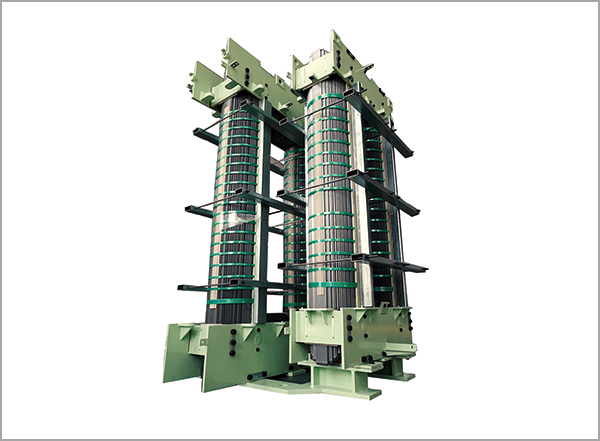In the world of electrical power transmission, transformers play a pivotal role in ensuring the efficient transfer of electrical energy from one circuit to another. Among the various components of a transformer, the core stands out as the most crucial element. The power transformer core is essential for the transformation process, as it provides a magnetic path for the electrical energy, allowing the transformer to step up or step down voltage levels.
The materials used for the construction of power transformer cores are vital in determining the overall efficiency and performance of the transformer. The most commonly used materials include:
Silicon steel (also known as electrical steel or lamination steel) is the most widely used material for transformer cores. It is an alloy of iron and silicon, which increases the material’s electrical resistance and reduces the core's eddy current losses. Silicon steel is produced in thin sheets, which are stacked or laminated together to form the core. These laminations help to reduce energy losses and improve the transformer’s efficiency by preventing the flow of circulating currents.
Amorphous steel is a non-crystalline metal alloy that offers lower core losses compared to traditional silicon steel. It has excellent magnetic properties, and its use is increasing in high-efficiency transformers, as it reduces energy losses, particularly in low-load conditions. However, amorphous steel is more expensive than silicon steel, which can limit its use in certain applications.

To further reduce energy losses, transformer cores are often constructed using laminated steel sheets. These sheets are coated with an insulating material, which helps to prevent the flow of eddy currents. By stacking these thin sheets, the core’s overall magnetic performance is enhanced, and energy losses due to resistance are minimized.
Some advanced transformers may use specialized alloys for the core to improve its performance. These alloys are often tailored for specific applications, such as high-voltage transformers, where efficiency and reliability are paramount.
The primary function of the transformer core is to provide a magnetic path for the alternating current (AC) that flows through the primary winding of the transformer. When electricity flows through the primary winding, it creates a magnetic field around the winding. The core channels this magnetic field to the secondary winding, where it induces a voltage and allows energy to be transferred to the secondary circuit.
The core serves as a closed loop for the magnetic flux, allowing it to efficiently flow between the primary and secondary windings. This magnetic flux is the key to the transformer’s operation, and the core’s design ensures that the flux is effectively utilized.
The magnetic flux generated by the primary winding induces a voltage in the secondary winding, according to Faraday's Law of Induction. The core, by guiding the magnetic flux, helps to control the voltage output of the transformer, enabling it to step up or step down the voltage as required.
Transformer core materials are chosen for their ability to minimize losses. Eddy current losses (caused by circulating currents within the core material) and hysteresis losses (due to the magnetic properties of the material) are minimized through the use of high-quality materials and thin laminations. Reducing these losses is critical to improving the efficiency of the transformer.
The design and material choice of the transformer core are critical in ensuring the optimal performance of transformers in power transmission systems. The core impacts various aspects of transformer operation, including:
A well-designed core helps to minimize energy losses, maximizing the efficiency of the transformer. This is particularly important in large-scale power transmission systems, where energy efficiency directly affects operational costs and environmental impact.
Efficient cores help prevent overheating, as they minimize the losses that would otherwise generate heat. By maintaining optimal temperatures, the core contributes to the longevity and reliability of the transformer.
The choice of core material can significantly affect the cost of manufacturing transformers. While high-efficiency materials such as amorphous steel may be more expensive, they offer long-term cost savings by reducing energy consumption. For large-scale power transformers, choosing the right material is a balance between initial cost and operational efficiency.
 +86-523 8891 8899
+86-523 8891 8899  +86-523 8891 8266
+86-523 8891 8266  info@tl-core.com
info@tl-core.com  No.1, Third Industrial Park, Liangxu Street, Taizhou City, Jiangsu, China
No.1, Third Industrial Park, Liangxu Street, Taizhou City, Jiangsu, China 

 English
English Español
Español Türk
Türk 中文简体
中文简体